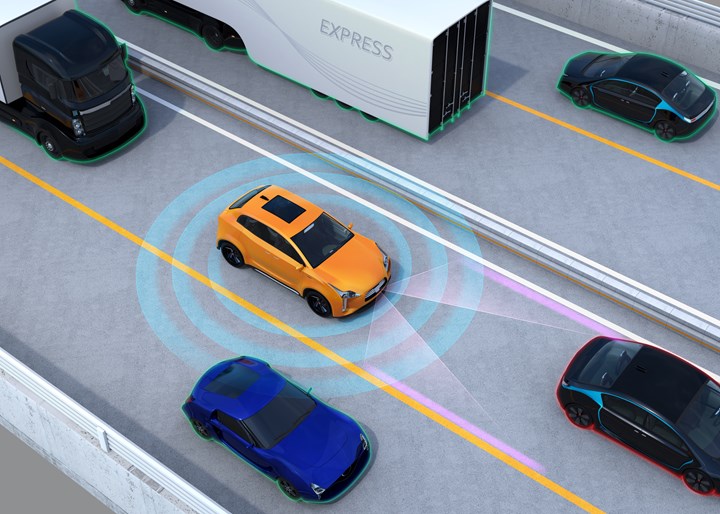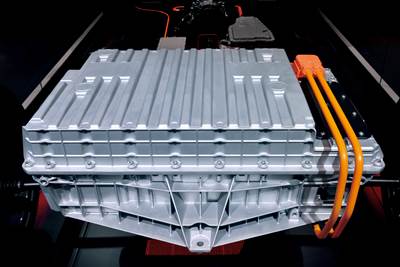
The advent of electric vehicles and an overarching trend toward sustainability is changing the transportation market landscape.
Photo Credit: Getty Images
Rising awareness of climate change, efforts to mitigate the strain of traffic on infrastructure, and calls for sustainable solutions have been gradually increasing acceptance of electric vehicles (EVs) over the past few years. That sentiment, coupled with a need to rethink strained supply chains, have the transportation markets poised for monumental changes in the coming years. Growing consciousness of environmental responsibility and attempts to minimize reliance on fossil fuels are bringing new opportunities for electric vehicles. On the heels of that, changes in consumer behaviors are increasing interest in autonomous vehicles, which are gradually entering the market as fleet vehicles.
Such changes bring with them shifts in the roles that surface finishing plays in the automotive and transportation industries. Suppliers working with transportation OEMs are working to develop new finishing solutions to enable this new breed of vehicles.
In April of 2021, Axalta (Philadelphia, Pa.), global supplier of liquid and powder coatings, launched Axalta Mobility Coatings — a new business unit focused on the accelerating demand for e-mobility and the evolving coatings needs of commercial vehicle OEMs, fleet owners, and shared mobility providers. According to Kevin O’Connor, director of global products for Axalta Mobility Coatings, the move was more than just a rebranding of the company’s transportation coatings business.
“The entire industry has changed,” O’Connor says. “The advent of autonomous vehicles and electric vehicles, as well as an overarching trend of sustainability, has really changed our customers’ needs. We’re not just talking about paint that protects and beautifies a surface anymore — there’s other functionality that needs to be considered.”
O’Connor says the ways in which coatings will evolve to enable EVs and autonomous vehicles are vast. Axalta Mobility Coatings’ solutions portfolio is aimed at addressing the mobility market’s needs from corrosion protection to thermal management of the batteries and electric motors to final exterior finishes with enhanced functionality.

Electric vehicles require a range of specialized coatings for corrosion protection and thermal management in addition to exterior finishes with enhanced functionality.
Photo Credit: Getty Images
Body in white
To get the full picture, it’s best to start at the beginning — the body in white (BIW), the stage in which the vehicle frame has been joined together but any coatings have yet been applied. O’Connor says there are over 200 OEM paint shops globally that are pivoting to be able to coat EVs at the BIW stage.
“The body in white for electric vehicles looks a lot different,” O’Connor says. “It has a really heavy thermal mass.”
He explains the additional weight of a battery requires the whole BIW to be structurally reinforced. This additional thermal mass poses challenges for electrocoating the vehicle frame.
Typically, at the BIW stage, vehicles undergo an ecoat dipping process and a subsequent curing process to provide corrosion protection to all the metal surfaces. The additional mass of the EV frame introduces new variables.
O’Connor explains, “If you’re using conventional line speeds and a conventional heating profile, and now you have that much more thermal mass going through — it’s heavier and there are thicker areas, and traditional electrocoat chemistries aren’t always curing effectively. You can’t just turn up the temperatures and slow down the line speed, because while you might be able to cure these thicker areas, you start overbaking thinner areas.”
Axalta Mobility’s response to this problem is something called a broad bake electrocoat known as AquaEC FLEX that allows use of traditional electrocoat process line speeds and temperatures by employing a chemistry that cures at lower temperatures. Instead of the traditional 160°C metal temperature, the cure can be executed at a metal temperature as low as 140°C.
Thermal protection
Two of the biggest concerns that have kept electric vehicles from gaining popularity historically have been range and safety. The possibility of finding yourself stranded somewhere with no charging stations or not having enough horsepower to accelerate effectively are very real concerns.
To keep EV motors and batteries operating efficiently, it’s important to maintain an optimum temperature range. Meanwhile, EV motors can generate operating temperatures that may exceed 200°C. Coatings are used to help with this thermal management and electrical shielding.
“You need to ensure that there’s electrical isolation and thermal dissipation, as well as mechanical integrity, in order to get greater horsepower and range,” O’Connor says.
Axalta’s Voltatex 4224 impregnating resin is designed to conduct the thermal energy quickly from inside to outside of the electrical device, thereby enabling higher motor efficiency. Voltatex is reported to reduce thermal stress by up to 30°C. The product also reduces the weight of electrical motors by more than 15%. Running motors at lower temperatures can also increase motor lifetime and reduce the size of the motor needed, conserving materials and further contributing to the goal of sustainability.

Autonomous vehicle control depends on the use of sensors to navigate the surrounding environment and other vehicles on the road. Coatings play an important role in the successful function of these technologies.
Photo Credit: Thinkstock
More than a paint job
Of course, when it comes to automotive finishing, the first thing that pops into the consumer’s mind is the paint job. Yes, a car’s exterior paint is a coating that affords beauty and surface protection, but there’s more to it than that. As the transportation industry evolves, coatings are being developed to offer advanced functionality. For example, autonomous functions of vehicles enabled by radar or LiDAR require special coatings considerations.
Most of the cars currently have a single radar sensor on the front used for adaptive cruise control, which automatically slows down when it detects another car in front of it. Automotive engineers are working to use this radar not only front facing, but all around the perimeter of the vehicle to map the surrounding environment and enable autonomous control of the vehicle. The challenge lies in placing the radar units around all sides of the vehicle while simultaneously hiding them so that the vehicle is still aesthetically pleasing.
“You can’t just slap these things in your vehicle with a conventional coating configuration and hope that they work,” O’Connor says. “You have to really understand the physics of how radar propagates through materials.”
From the plastics used in the body panels to the base-layer and topcoat, the radar must be able to transmit through those materials to be effective. Coatings such as metallic paints can wreak havoc with the radar performance. Axalta Mobility has developed modeling software that uses simulations to analyze the paint formulation to determine the percentage of radar transmission and uses it to develop coating solutions that enable radar sensors.
“We’ve gone to great lengths to really understand how radar interacts with paints and plastics and modify our coatings — not only the composition, but the thickness of our coatings — to allow radar to do its job and ensure safety,” O’Connor says.
As for LiDAR, which stands for Light Detection and Ranging, light waves are bounced off of surroundings to allow the vehicle to navigate its environment.
Axalta Mobility is working to develop coatings that are more detectable by LiDAR systems.
“We want to ensure that our vehicles can be seen,” O’Connor says. “You need a paint system that sends enough of that initial LiDAR signal (called a retroreflection) back to the host vehicle.”
Autonomous functionality aside, there are other considerations. For example, O’Connor points to EV fleet vehicles entering service, specifically e-commerce vans, that are engineered simply in order to reduce weight, increase range and maximize cargo space. The sparse design offers little insulation, requiring coatings that offer solar control functionality to manage heat absorbtion, yet still retain aesthetics important for branding.
The wheel keeps turning
The technologies that will ultimately help EVs occupy a larger portion of the total transportation market continue to be developed. Many of the challenges enabling EVs presents have various solutions and the industry hasn’t totally converged. Various intumescent coatings including powder coating and liquid coatings are used to insulate battery boxes and isolate thermal activity. There are differing philosophies about how to best enable autonomous vehicles from radar to LiDAR to visual systems (cameras). However, it seems like the tipping point for EVs and autonomous vehicles has been reached and traditional internal combustion engine (ICE) vehicles will be sharing the road with an increasing number of their electric counterparts in the years to come.
Related Content
Finishing Systems Provider Celebrates 150 Years, Looks to Future
From humble beginnings as an Indiana-based tin shop, Koch Finishing Systems has evolved into one of the most trusted finishing equipment providers in the industry.
Read MoreCoatings Plant Evolves with Market Trends
Expanding its focus from exclusively serving the RV industry, one of this company’s stand-alone coatings plant has successfully extended its services to additional markets.
Read MoreCuring Oven Basics
Simply heating up the substrate does not cure the coating. There are many variables to consider when choosing the best cure oven for your application...
Read MoreTTX’s Automated Conveyor Carrier System Offers Wireless, Flexible Operation
ACC system designed for reliable, consistent point-to-point movement of everything from small to heavy parts.
Read MoreRead Next
Speedy Growth in EV Batteries Spurs Cleaning Technology
Hubbard-Hall teams up with lithium-ion battery makers to provide cleaning chemistry for electric vehicle batteries.
Read MoreCoatings Drive Electric Vehicles Further
Electric vehicle batteries depend on coatings to maintain optimal temperatures, reduce the risk of fire damage and electrical interference, and more.
Read More





















